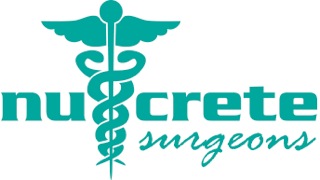Frequently Asked Questions
How do I Maintain my Floor?
A concrete floor is amongst the easiest and most affordable to maintain. Depending on levels of traffic and abrasion, the following can be used as a guideline from which to make adjustments. A daily dry dust mopping does wonders to keep your floor looking brilliant, while mopping once a week using clean water, without soap, will keep it clean. Soap isn’t designed to clean polished concrete, but adding a non-acidic low-ph balanced solution such as AmeriPolish, Surelock Rejuvinator or Xtreme Clean Cleaner, in addition to these once a week cleanings, can greatly improve the life and vitality of any polished concrete. Once a month, it is recommended that you apply a neutral detergent, and only once a year this should be followed by a burnishing with a diamond impregnated burnishing pad. In three years, applying a coat of stain guard before your annual burnish will greatly increase the floor’s life, and in another five whole years, it might be time to consider a slight re-polish, depending on traffic. Light traffic floors will last even longer than this. Following these easy and inexpensive steps can guarantee a beautiful floor life.
Should I Grind the Floor Wet or Dry?
Both! Well, either! The answer is, both wet and dry grinding have unique benefits and which one you use will vary based on a number of factors. Primarily, some people prefer wet grinds because the dust levels are kept virtually non-existent; however, the resultant slurry may be difficult to clean up without an auto-scrubber and requires meeting certain standards of disposal. Secondly, a stubbornly hard floor would benefit from a slightly wet grind to help break the ‘cream’ of the concrete. A diamond tool will last longer and grind faster when used wet. The resulting effects of a polished floor are virtually identical when polished wet or dry – there is little differences in the finished look, simply in the process taken to get there.
Is Polished Concrete Slippery?
Polished concrete is no more slippery than untreated concrete floors can be when dry. A wet smooth surface like polished concrete will always lose some traction, but there a floor treatment conditioners which can provide extra protection. These treatments can be added to your concrete cleaning routine and should only require a mopping. In all, polished concrete is safe even when wet with proper care,and is less slippery than a natural stone or marble floor would become.
How do I know If I'm Choosing the Right Contractor?
One of the best ways to begin looking for contractors is through recommendations of friends or businesses that you trust who have had their concrete floors polished. By finding a company through a recommendation you know whether they are reliable, efficient, and affordable. Once you’ve acquired a few candidates, begin looking at their websites, because now-a-days websites are a prominent factor in a business’s reputation and anyone worth their weight will have more information about themselves and the work they do on the Internet for you to read.
Get in touch with the one you favor, see if you can visit their offices or warehouses to get a better idea of who they are, make sure they’re licensed, get a copy of their insurance, and get a list of their referrals. By this time, you should have a good understanding of who your potential contractors are, and a favorite is likely piquing your interest. Now is the time for the ultimate question to consider: ‘Does this contractor understand the look I am attempting to create?’ A contractors credentials don’t matter much unless they are able to share your vision for the space involved, but once you find a match that sees what you’re seeing, it’s time to get a quote.
Is Every Concrete Slab a Candidate for Polishing?
Almost! Just about any concrete surface can be polished using the right tooling provided it was poured at least fourteen days before for curing purposes. Usually a floor in horrible condition can be restored with a good prepping process using PCDs and starting at a low grit metal; however, there are some floors that are beyond saving. In these cases, or when the floor is otherwise too damaged, the floor can be covered with a thin layer of concrete in a process called overlayment. Overlays may be dyed,and polished, just like your pre-existing concrete floor. What’s more is they can be customized even further than already existing concrete floors with the addition of decorative materials like colored glass or chips which can really make things unique. In the rare case that the floor is just not a candidate for an overlay, concrete coatings are still possible and provide a great look.
